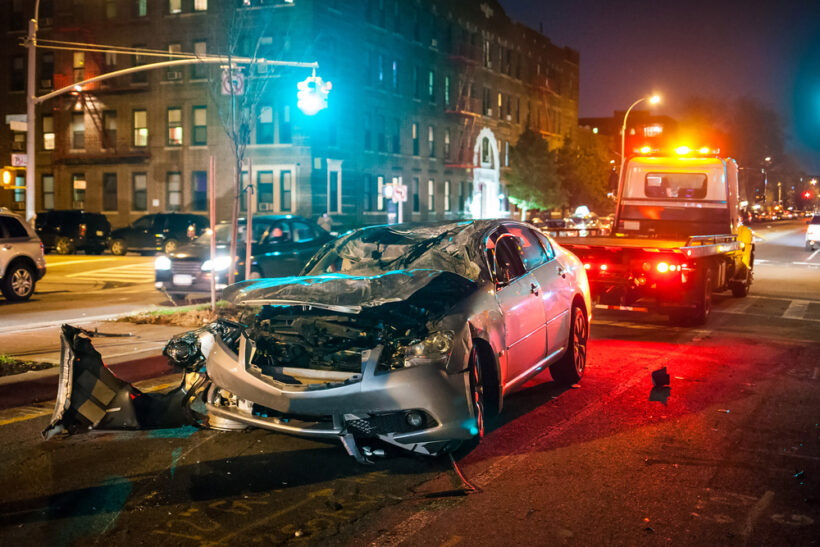Some car accidents end up being mere fender benders where no one gets hurt. Others result in multi-car pileups and multiple fatalities. The severity of a car accident varies dramatically. So what affects the severity of a car accident, and how much control do you have over those variables?
Number of Cars Involved
As you might suspect, accidents tend to get more severe and more complicated when multiple cars are involved. One car hitting another might only affect two people – the two people driving each car. But as you add more vehicles to the chain of collisions, you’ll add new vulnerable passengers (and more opportunities for destruction). This is why it’s important to pay extra attention and be extra cautious in high-traffic areas.
Type of Cars Involved
The severity of a crash also depends on what type of vehicles are involved. Force is a product of mass and acceleration; the more mass you have behind a vehicle, the more destructive force it’s going to wield while traveling at the same speed as its counterparts. That’s why a gigantic semi-truck traveling at 60 mph is going to do far more damage than a small personal vehicle traveling at 60 mph.
Additionally, smaller and less protective vehicles can lead to more “severe” accidents due to the increased susceptibility to personal injury. Motorcyclists, for example, with no vehicle body to protect them, are more likely to be injured or killed in a car accident.
Speed of Each Vehicle
One of the most important variables determining accident severity is the speed of the vehicles involved. The faster a car is traveling, the less time the driver has to react – and the more force they’ll carry when colliding with another object. A car traveling at 50 mph could easily kill a pedestrian. At 25 mph, the odds are much more in the pedestrian’s favor.
Additionally, the speed of the vehicle getting hit matters. If you’re traveling at 50 mph and a car going 75 mph rear-ends you, that’s going to cause less initial damage than a car traveling at 50 mph and hitting your car while it’s stationary.
If two cars are traveling in opposite directions and they hit head-on, the damage is even more severe.
Impact Location and Type
The type and location of impact also contributes to the severity of an accident. If a car rear-ends yours, it’s going to hit the trunk first, affording you (the driver) some cushioning and some space. Additionally, if you’re already traveling forward, the rear-ending impact is less likely to push you into further oncoming traffic than if you’re hit from another direction. By contrast, getting T-boned immediately puts a person in the driver’s seat in harm’s way.
Body Position Within Car
Body position within the car can also determine what type of injuries are sustained and how much damage is truly done. A person unnaturally folded in the backseat is going to be more prone to injuries than someone sitting upright with a seatbelt on.
Safety Features Included (and Used)
Most cars have at least some built-in safety features designed to minimize the extent of damage caused by an accident and protect the people inside the vehicle as much as possible. However, not everyone chooses to buy cars that include these safety features – and not everyone chooses to use them even when they’re available.
Consider:
· Car shape and structure.
The shape and structure of a car can contribute to its ability to withstand impact. For example, many modern cars feature “crumple zones,” which are designed to crumple inward when hit; this diffuses the force from impact and protects the passengers inside (even though it looks like more damage has been done from the outside).
· Airbags.
Airbags are designed to cushion the impact of a car accident, preventing injuries like broken bones. Traditional airbags deploy from the dash, but many modern cars also feature side airbags and other auxiliary safety mechanisms. If working properly and used properly, they can dramatically reduce the injuries caused by an accident.
· Seatbelts.
One of the oldest and still one of the most effective safety features in vehicles, there’s no excuse not to wear a seatbelt. Seatbelts keep your body secure in high-speed accidents; they can prevent you from being ejected through the windshield and potentially save your life in the process.
With just a handful of simple steps, you can dramatically reduce your risk of being in an accident – and reduce the severity of an accident, should one occur. Drive under the speed limit, stay aware of your surroundings, and use all the safety features available to you; you can’t prevent all accidents, but you can significantly increase your personal safety this way.
Laila Azzahra is a professional writer and blogger that loves to write about technology, business, entertainment, science, and health.
